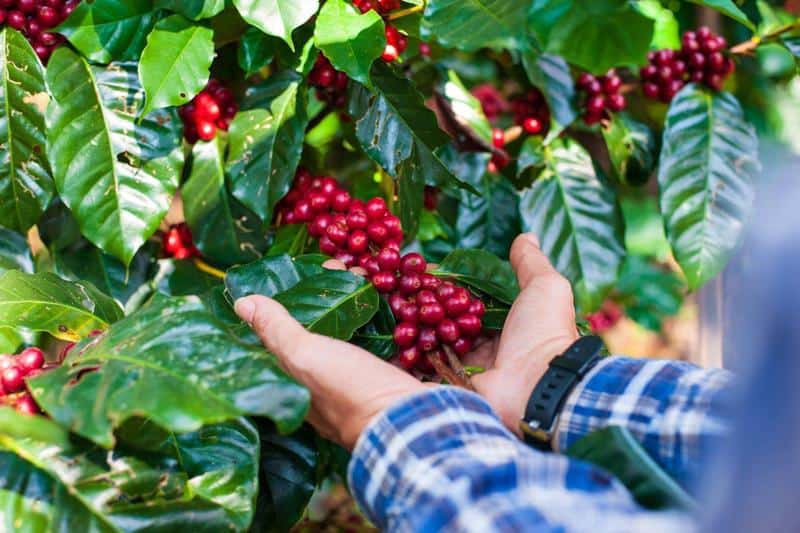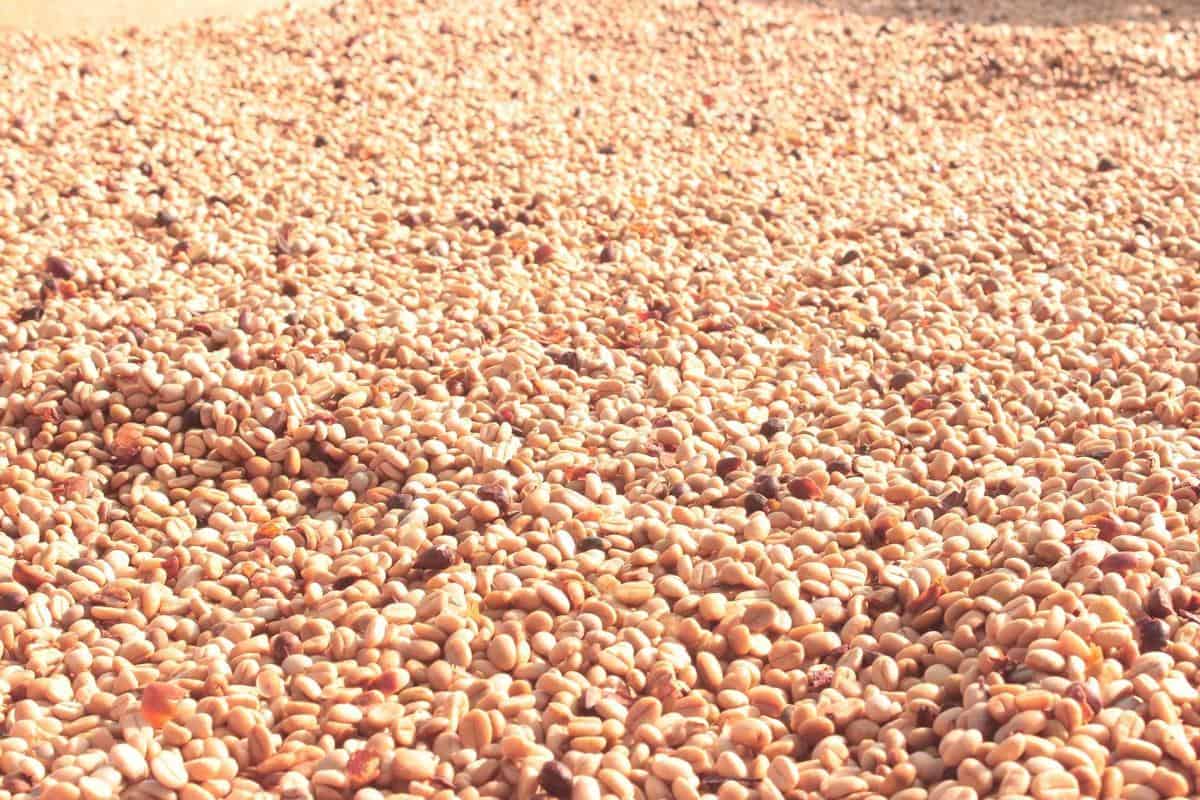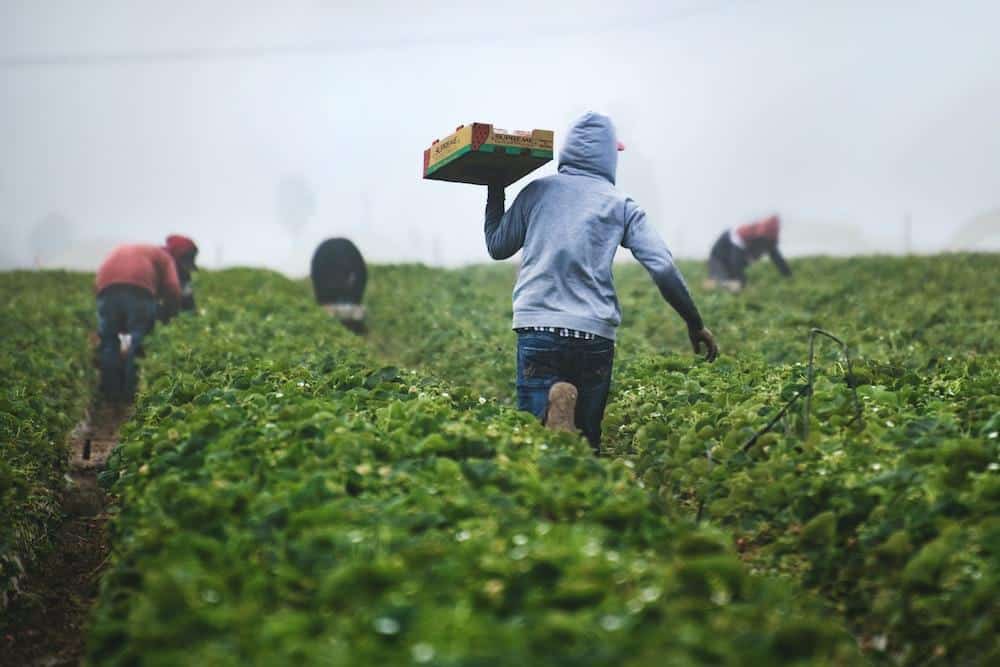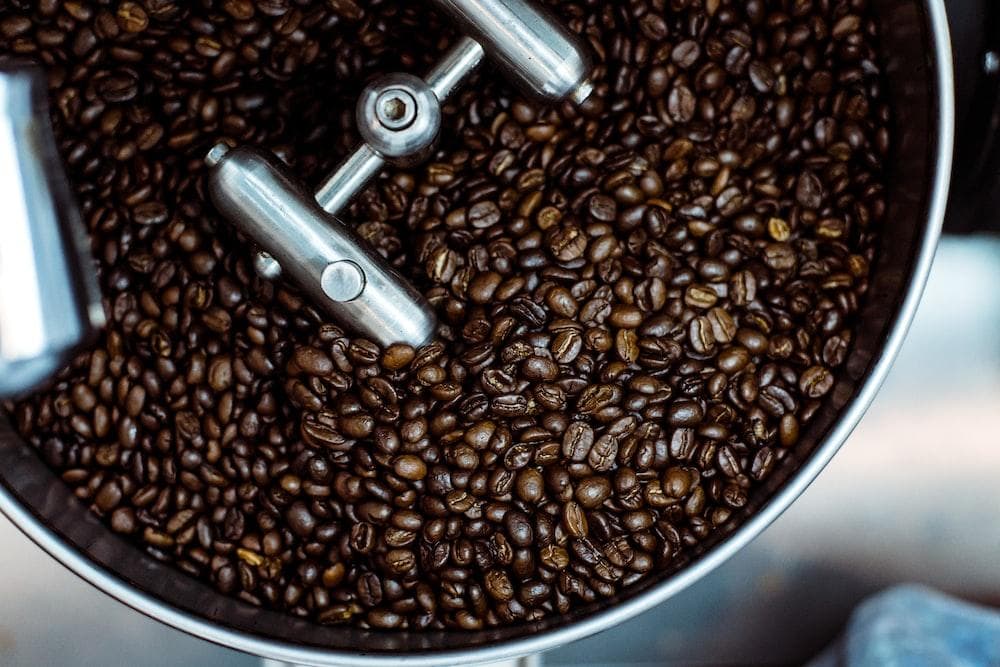Coffee is a beloved beverage consumed by millions around the world, but have you ever wondered about the true nature of this aromatic drink? Is coffee a fruit?
This puzzling question has sparked much debate and confusion among coffee enthusiasts and scientists alike. In this blog post, we will delve into the intricacies of coffee’s classification, exploring its botanical characteristics, appearance, flavor impact, nutritional benefits, ecological sustainability, and ultimately, seek to answer whether coffee can be defined as a fruit.
At first glance, it may seem strange to categorize coffee as a fruit. After all, we typically think of fruits as juicy and sweet produce that we eat fresh or use in various culinary creations. However, coffee is unique in its origin.
It comes from the seeds of coffee plants known scientifically as Coffea spp., making it part of the Rubiaceae family. Understanding the botanical classification of coffee plants is essential in unraveling their true nature and shedding light on the perplexing question at hand.
Upon diving deeper into the world of coffee plants, we discover fascinating insights into their fruit-bearing characteristics. The journey begins with the lush cherries that adorn these plants’ branches – commonly referred to as coffee cherries.
With varying sizes, colors ranging from vibrant red to yellow or even purple hues, and intriguing shape variations, these cherries serve as key players in unlocking the mystery behind coffee’s fruity identity. Through vivid visuals and detailed descriptions, we will venture into what makes a coffee cherry distinct from your average fruit.
As we embark on this exploration of whether coffee is truly a fruit or not, prepare to be amazed by the complexity that lies within each cherry. From examining the different layers within a coffee fruit to understanding their functions and witnessing their transformation from mere fruits to beloved beverages – there is much more than meets the eye when it comes to these caffeine-infused entities.
So join us on this awe-inspiring journey to uncover the truth about coffee’s fruity nature and broaden your understanding of the beloved beverage that starts so many of our mornings.
Unveiling the Botanical Classification of Coffee Plants
Scientific Naming of Coffee Plants: Coffea spp.
To truly understand whether coffee can be classified as a fruit, it is essential to delve into the fascinating world of botanical classification. Coffee plants belong to the genus Coffea, which encompasses numerous species and varieties. The scientific name given to coffee plants is Coffea spp., indicating that there are many different types within the genus.
Botanical Characteristics of Coffee Plants
Coffee plants exhibit several crucial botanical characteristics that define their classification as fruit-bearing plants. One key characteristic is their status as angiosperms, which means they produce flowers and bear seeds enclosed in a protective structure. In the case of coffee plants, these structures are known as fruits or cherries.
Another defining feature of coffee plants is their status as evergreen shrubs or small trees. They typically grow in tropical regions with specific climatic conditions suited for their growth and development. The leaves of coffee plants are dark green, glossy, and arranged alternately along the branches.
The Fruit-Bearing Nature of Coffee Plants
Perhaps the most compelling evidence for considering coffee as a fruit lies in the fact that coffee plants indeed produce fruits – commonly referred to as cherries. These cherries contain coffee beans, thus making them an integral part of the coffee production process.
The formation of these fruits begins after successful pollination occurs between the flowers of the coffee plant. Each flower has a pistil (female reproductive organ) that must be fertilized by pollen from another flower’s stamen (male reproductive organ). Once fertilization takes place, the ovary within the flower develops into a fruit – ultimately maturing into a coffee cherry.
The Journey of a Coffee Cherry
Coffee’s journey from bean to cup is a fascinating process that begins with the coffee cherry. In this section, we will delve into the appearance of a coffee fruit, commonly known as a coffee cherry, and explore its various characteristics.
1. Delve into the appearance of a coffee fruit:
Coffee cherries are small, round fruits that grow on coffee plants. They have a unique and vibrant appearance that varies depending on the species and ripeness of the fruit. Generally, coffee cherries start off as green when unripe and gradually transition to yellow, orange, or red as they ripen. This color evolution is an essential indicator for determining when the cherries are ready to be harvested.
2. Examine the size, color, and shape variations:
Coffee cherries come in different sizes and shapes based on their variety. For example, Arabica coffee cherries are typically larger than Robusta ones. The size can range from as small as 0.25 inches to more than 0.5 inches in diameter. Additionally, while many people imagine coffee cherries as perfectly round, they can also be elliptical or oblong in shape.
3. Include vibrant visuals for enhanced understanding:
To offer readers an immersive experience into the world of coffee fruits, it would be beneficial to include vibrant visuals such as photographs or illustrations that showcase the various appearances of coffee cherries at different stages of ripeness. These visuals could feature side-by-side comparisons of unripe green cherries against ripe red ones to highlight the drastic shift in color.
Understanding what a coffee fruit looks like is crucial because it allows us to appreciate its journey from farm to cup better. Next in our exploration of coffee’s origins, we will take a closer look at the intricate anatomy of a coffee cherry and uncover its unique features. Join us for an eye-opening adventure inside the coffee fruit.
A Peek Inside
Coffee cherries, the fruit of coffee plants, may be small in size but are undoubtedly fascinating when it comes to their anatomy. To truly understand the journey from fruit to beloved beverage, it is essential to explore the intricate structure of a coffee cherry.
At its core, a coffee cherry consists of several distinct layers that contribute to its overall composition and flavor development. The outermost layer, known as the exocarp or skin, is typically thin and can vary in color-ranging from bright red to yellow or even purple, depending on the variety of coffee.
Beneath the exocarp lies another layer called the mesocarp or pulp. This fleshy layer is responsible for imparting some sweeter notes and contributes to the overall taste profile of the coffee. It contains high water content and is often quite juicy.
Further inside, we encounter the endocarp-a protective layer also referred to as parchment. This dense casing surrounds what most people recognize as the characteristic green coffee bean. The parchment helps shield and preserve the innermost seed until it reaches processing facilities where it will undergo further steps for roasting and brewing.
While many might be surprised by this revelation about coffee’s anatomical complexity, it is this meticulous arrangement that allows for an intriguing transformation from fruit to beverage delight. As coffee aficionados continue their exploration of different flavors and profiles, understanding the anatomy of a coffee cherry serves as yet another window into the captivating world of this popular drink.
| Layers | Description |
|---|---|
| Exocarp (Skin) | The outermost layer of a coffee cherry; varies in color |
| Mesocarp (Pulp) | Fleshy layer; contributes to the coffee’s taste profile |
| Endocarp (Parchment) | Protective layer surrounding the green coffee bean |
The Alluring Flavor Complexity
One of the most fascinating aspects of coffee cherries is their significant impact on the flavor profile of coffee. The flavors found in brewed coffee can vary greatly depending on various factors, with the quality and characteristics of the coffee cherry playing a crucial role.
In this section, we will delve into the intriguing relationship between coffee cherries and taste, exploring how factors such as ripeness, harvesting methods, and processing techniques contribute to the alluring flavor complexity of our beloved beverage.
The ripeness at which coffee cherries are harvested has a profound effect on the resulting flavors in brewed coffee. As cherries ripen on the plant, they undergo chemical changes that influence their taste. Ripe cherries tend to have an increased sugar content and acidity compared to underripe or overripe cherries.
This higher sweetness and acidity contribute to a more vibrant and complex flavor profile in the final cup of coffee. Furthermore, ripe cherries generally exhibit more desirable floral, fruity, and wine-like notes that add depth and nuance to the overall taste experience.
Harvesting methods also play a crucial role in determining the flavor characteristics of coffee. There are two primary methods of harvesting coffee cherries: selective picking (also known as hand-picking) and mechanical stripping (often used for lower-grade coffees). Selective picking involves carefully selecting only fully ripe cherries for harvest by hand, ensuring optimal flavor development.
On the other hand, mechanical stripping involves mechanically removing all cherries from branches regardless of their ripeness level. Selective picking leads to a higher-quality coffee with more distinct flavors, while mechanical stripping can result in a blend of underripe and overripe cherries that may produce a less nuanced cup.
Processing techniques after harvesting can further enhance or alter the flavors found in coffee cherries. There are three main processes: washed (or wet) processing, natural (or dry) processing, and honey (or semi-washed) processing. Each method imparts unique flavors and characteristics to the coffee.
In washed processing, the fruit pulp is removed from the cherries before drying, resulting in a clean and bright cup with pronounced acidity. Natural processing involves drying the whole cherry with its skin intact, creating a sweeter, fruitier, and fuller-bodied cup. Honey processing falls in between, as some of the fruit pulp is removed but not all, leading to a cup that showcases both fruity notes and increased sweetness.
Understanding how coffee cherries impact taste helps coffee enthusiasts appreciate the remarkable complex flavors found in their cup of joe. It also allows for exploration and experimentation with different origins, varieties, and processing methods to discover one’s preferred flavor profiles. With each sip, one can now better appreciate the incredible journey that coffee cherries go through before reaching our mugs.
| Factors | Impact on Taste |
|---|---|
| Ripeness of Coffee Cherries | Influences sugar content, acidity, and desirable flavor notes. |
| Harvesting Methods | Selective picking yields higher-quality coffee with distinct flavors compared to mechanical stripping. |
| Processing Techniques | Different processes (washed, natural, honey) result in varying flavor characteristics such as brightness, sweetness, fruitiness. |
Coffee Fruit
The Unexpected Nutritional Benefits of Coffee Cherries
While many coffee enthusiasts primarily enjoy their daily cup for the taste and caffeine boost, they may be surprised to learn that coffee cherries, the fruit of the coffee plant, pack a nutritional punch. Coffee cherries are often discarded during the coffee production process, but recent research has shed light on their hidden potential as a superfood.
Coffee cherries are rich in antioxidants, which help combat oxidative stress and reduce inflammation in the body. In fact, studies have shown that coffee cherries contain even higher levels of antioxidants than blueberries or pomegranates. These powerful compounds can help protect against chronic diseases such as heart disease, cancer, and neurodegenerative disorders.
In addition to antioxidants, coffee cherries are also a good source of essential vitamins and minerals. They contain high levels of vitamin C, which supports immune function and collagen synthesis. Coffee cherries also provide important minerals such as potassium, magnesium, and calcium. These nutrients play vital roles in maintaining healthy muscle function, regulating blood pressure, and promoting bone health.
Research on the Health Advantages of Coffee Fruit
Recent studies have started to explore the potential health benefits that consuming coffee cherries may offer. One study published in 2020 investigated the effects of drinking a beverage made from coffee cherry extract on cognition in older adults. The results showed improved cognitive performance in tasks related to attention and memory.
Another area of interest is the impact of coffee cherry consumption on exercise performance. Preliminary research suggests that the antioxidants present in coffee cherries may enhance exercise recovery by reducing inflammation and oxidative stress in athletes. This opens up possibilities for using coffee fruit-based supplements or products specifically targeted at fitness enthusiasts.
It’s important to note that while research is uncovering these potential benefits, more studies are needed to fully understand the extent of their impact on human health. Nonetheless, the nutritional profile of coffee cherries and the initial findings are certainly promising, prompting further investigation into their potential therapeutic applications.
An Ecological Marvel
Coffee plants are not only a source of the beloved beverage; they also hold significant ecological potential as a fruit. The coffee fruit, also known as a coffee cherry, is an unsung hero in terms of environmental sustainability and waste reduction. In this section, we will explore the various ways coffee as a fruit can contribute to a more sustainable world.
1. Utilizing Coffee Fruit By-Products:
Coffee production generates significant by-products that can be repurposed to reduce waste and promote sustainability. One common by-product is coffee pulp, which is the outer layer of the fruit removed during processing. This pulp is often used as organic fertilizer or compost, returning valuable nutrients back into the soil. Additionally, it can be utilized for bioenergy production or as feed for livestock.
2. Alternative Uses for Coffee Fruit:
Beyond its traditional use as a beverage, coffee fruit has found applications in other industries. For example, researchers have discovered that coffee cherry husks contain natural dyes that can be used in textile manufacturing, reducing the need for synthetic and environmentally harmful dyes. Skincare products enriched with coffee fruit extracts have also gained popularity due to their antioxidant properties and potential anti-aging effects.
3. Supporting Biodiversity and Conservation:
Coffee plantations provide vital habitats for numerous bird species, especially in shade-grown systems where native trees are maintained alongside the coffee plants. These agroforestry practices promote biodiversity by offering food sources and nesting grounds for migratory birds and local wildlife.
The Final Verdict
After exploring the botanical classification, appearance, anatomy, flavor complexity, nutritional benefits, and ecological potential of coffee as a fruit, it is time to reach a final verdict on the question: Is coffee truly a fruit?
While it has become clear that coffee plants belong to the botanical family Rubiaceae and their fruits are called coffee cherries or coffee fruits, the debate around whether or not coffee can be definitively considered a fruit remains. The term “fruit” itself has different meanings depending on context. Botanically speaking, fruits are the mature ovaries of flowering plants that contain seeds. In this sense, coffee cherries undoubtedly fulfill the criteria of being fruits.
However, in culinary and everyday usage, many people associate fruits with sweetness and consumption in their raw form. This is where confusion arises because coffee cherries do not fit this traditional image of a fruit. They have a unique taste characterized by sweetness and acidity but with underlying complexities that include floral, fruity, and even wine-like flavors. Additionally, they need to undergo careful processing to transform into the beloved beverage we know as coffee.
Ultimately, whether one considers coffee to be a fruit may depend on personal perspective and context. From a scientific standpoint and within the realm of botany, there is no doubt that coffee cherries are indeed fruits.
However, from a culinary standpoint or within everyday conversations surrounding food and beverages, opinions may differ. As long as there is an appreciation for the intricate journey from fruit to cup and an understanding of the fascinating characteristics that make coffee uniquely intriguing as both a plant species and a beverage staple worldwide, perhaps it doesn’t matter how one chooses to define it – what matters most is recognizing and savoring its incredible qualities.
Closing Thoughts
In conclusion, the question of whether coffee is a fruit remains a subject of fascination and debate. Throughout this blog post, we have explored the botanical classification of coffee plants, delved into the appearance and anatomy of a coffee fruit, discussed its impact on taste and flavor complexity, highlighted its surprising nutritional benefits, and shed light on the sustainable potential of coffee as a fruit. But now it’s time to address the pressing question: is coffee truly a fruit?
Based on the evidence presented in this article, it is clear that coffee falls under the classification of a fruit. Scientifically named Coffea spp., coffee plants exhibit crucial botanical characteristics associated with fruit-bearing plants. The coffee cherry, with its varying sizes, colors, and shapes, serves as undeniable proof of its fruit status.
Furthermore, the impact of coffee cherries on taste cannot be ignored. From influencing flavor profiles to being harvested at optimal ripeness for desired results, the cherries play an essential role in creating our beloved beverage. Additionally, their impressive nutritional profile and recent research on their health benefits shed further light on the importance of recognizing them as fruits.
We hope this blog post has sparked your curiosity about the multifaceted world of coffee fruits. We encourage you to share your thoughts and engage in discussions in the comments section below. Let’s continue exploring the fascinating nature of this beloved beverage together.
Frequently Asked Questions
Is coffee a bean or a fruit?
Coffee is actually neither a bean nor a fruit, but rather a seed. More specifically, it is the seed of the coffee plant, known as Coffea.
The confusion surrounding this lies in the fact that the seed is often referred to as a “coffee bean” due to its resemblance to various types of beans. However, botanically speaking, coffee is not classified as such.
What kind of fruit is a coffee?
Coffee belongs to the Rubiaceae family and is derived from the Coffea plant. Within this family, coffee can be categorized as a type of drupe fruit.
A drupe fruit typically consists of an outer skin or peel, fleshy pulp, and an inner hard shell that surrounds a single seed or pit. This classification places coffee alongside other familiar fruits like cherries and peaches.
What food group is coffee?
Coffee does not fit into any specific food group since it does not provide significant amounts of essential nutrients like vitamins or minerals. It primarily contains caffeine and certain natural compounds that contribute to its flavor and aroma profile. Therefore, coffee is typically considered a beverage rather than being placed within any specific food group.
Is coffee actually a cherry?
While coffee shares some similarities with cherries in terms of its botanical classification as a drupe fruit, it is more accurate to describe coffee as resembling a cherry rather than being an actual cherry itself.
This similarity arises from the fact that both have an outer peel (sometimes known as skin) surrounding an inner pulp layer with seeds inside (in coffee’s case, one rectangular-shaped seed).
Is a cherry a Berry?
Botanically speaking, cherries are classified as berries due to their structure and composition. Berries are fruits that develop from one single ovary with multiple seeds inside them (such as blueberries or strawberries). Since cherries possess these characteristics, they can indeed be categorized as berries according to botanical definitions.










